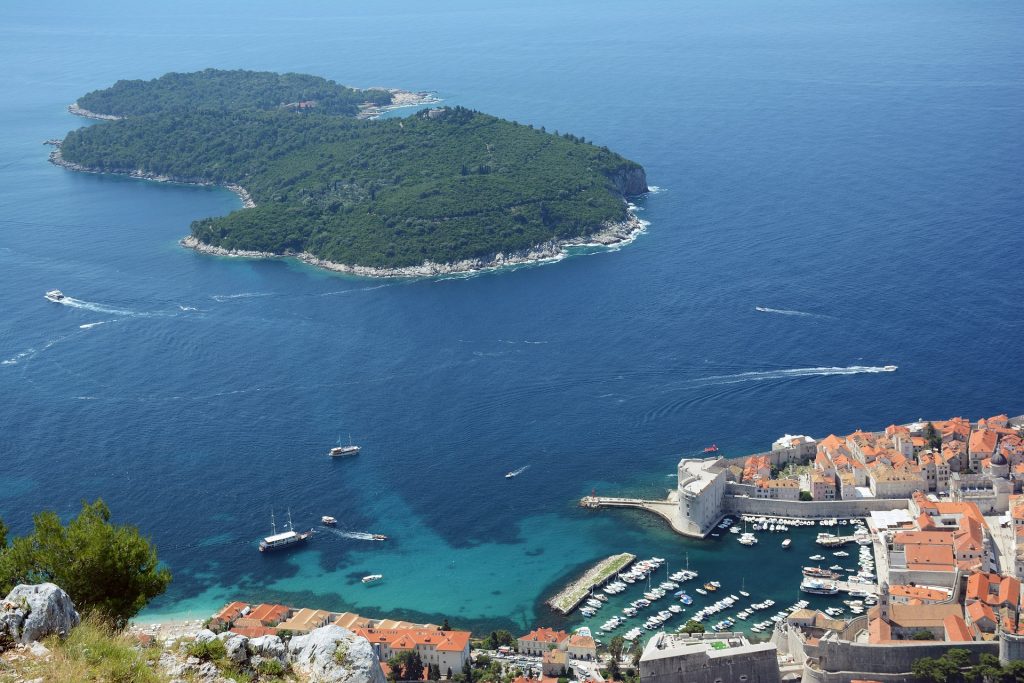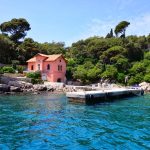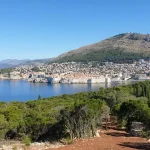April the 18th, 2024 – Have you ever visited the uninhabited island that lies just off the coast line of the bustling City of Dubrovnik? Meet stunning Lokrum.
Let’s turn the clock back to the fateful year of 2020. The tourism slowdown due to coronavirus was certainly severely affecting the wallets of the hospitality industry, but the quality of life for locals and the tourism experience for visitors to the Pearl of the Adriatic was severely enhanced.
My destination was just the other side of the famous UNESCO walls, to the old harbour, where a 50-year-old beautifully restored wooden boat was waiting with Ivica Grilec, Director of the Lokrum Nature Reserve.
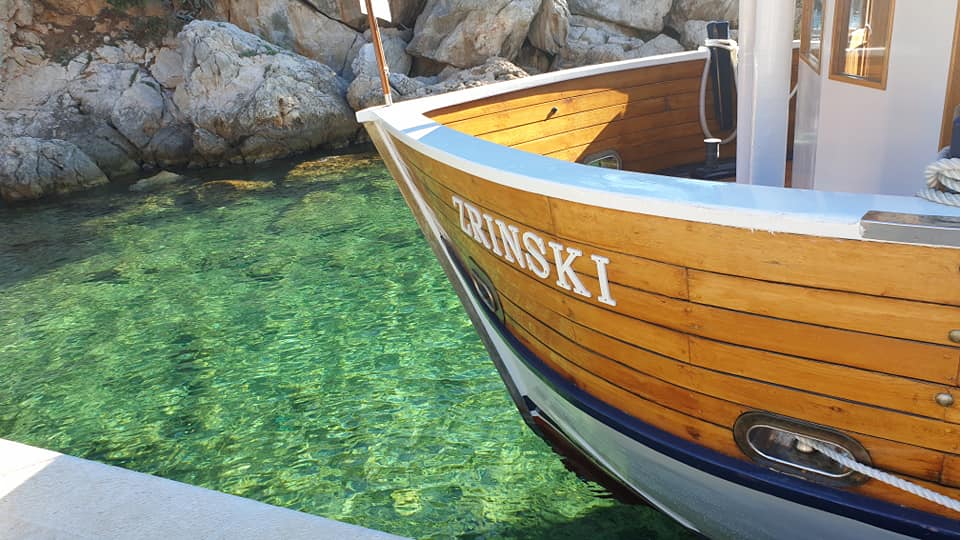
Ivica had kindly agreed to show me around the island he clearly loved deeply – that much became obvious within a minute of meeting him. Croatian tourism is full of officials for whom it is just a job. From the moment Ivica started explaining about the work and concept of the beautiful wooden boats that serviced the 10-minute ride to Lokrum from the Old Town, I knew I was in for a special tour. And so it proved.
How about this for a boat departure, as the old town disappeared slowly behind us, as Zrinka glided through the turquoise waters.
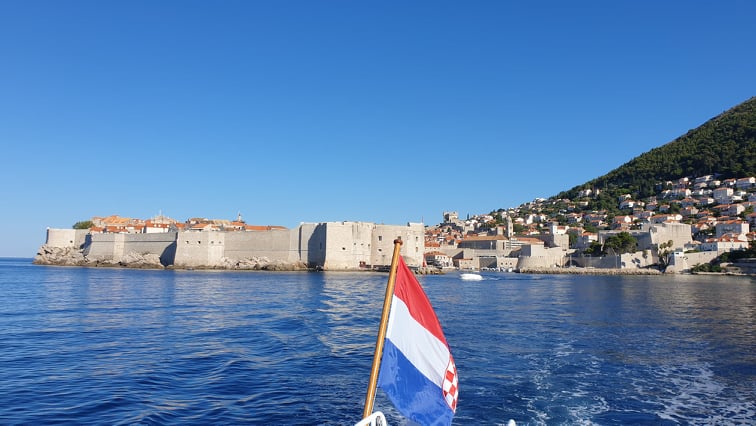
Lokrum is a popular escape for the locals from the summer crowds in the city. Indeed, it is the third most popular attraction, after the city walls and the cable car to Mount Srdj.
With plenty of Instagram moments on the way, if that is your thing.
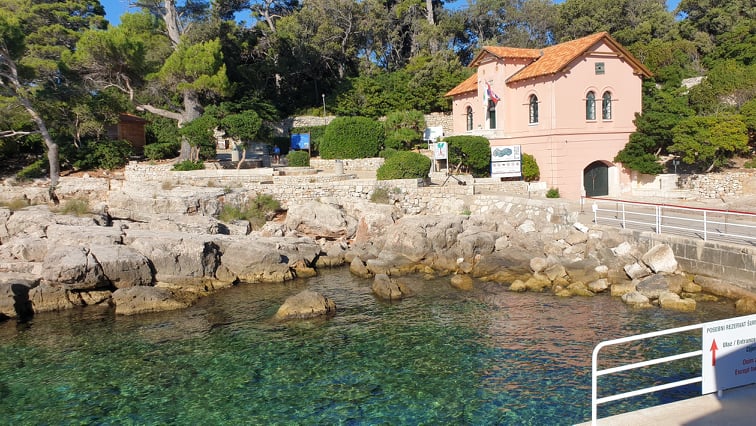
Away from the city, in a protected bay, we reached our destination, about as far from the bustle of Dubrovnik as one could imagine. As I wrote after my stay on the island of Kolocep, there are a number of fabulous places just 30 minutes from Dubrovnik, but a world away. Lokrum is close to the top of that list.
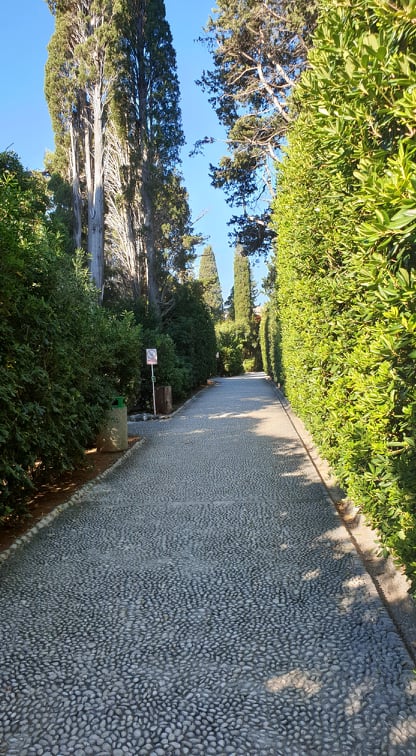
The first impression, apart from the nature and tranquillity was one of order and cleanliness. In my many years of living in this beautiful country, this was the first island I had visited which had absolutely no trash whatsoever. None. Ivica told me that they had invested heavily in the clean-up. The results are spectacular.
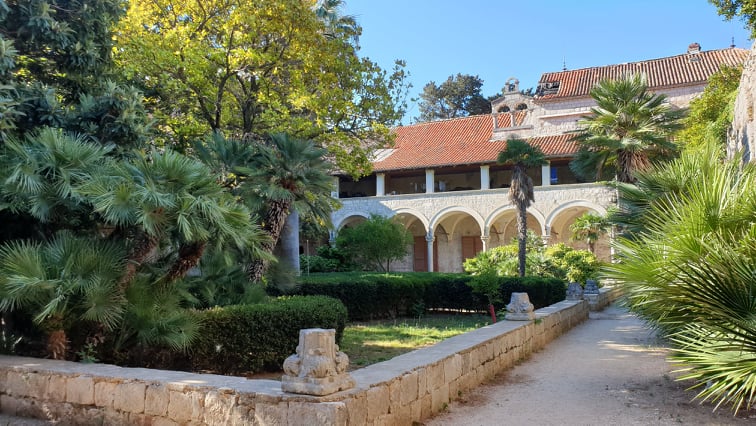
The main building on Lokrum is the Benedictine Monastery, which dates back to the 11th century. The Benedictines engaged in agriculture and farmed the fertile Lokrum land, producing wine, olives and olive oil, fruit, vegetables and ornamental plants.

Much of the monastery remains today, despite the passage of time and the extensive damage down in the major 1667 earthquake. This includes the 12/13th century Romanesque-Gothic basilica, as well as the ‘new’ Gothic-Renaissance monastery on the south side in the 15/16th century.

And all around amazing greenery. The botanical gardens have been fighting a losing battle with the numerous rabbits which roam freely on Lokrum. That situation has been brought under control in the last few years, and the botanical gardens are now starting to flourish.
And in the basement, something even more unusual – an exhibition dedicated to King Richard the Lionheart, who was allegedly shipwrecked here in 1192 on his way home from The Crusades. He vowed to build two churches of thanks if he survived, one in England and one on Lokrum. This church was eventually built in Dubrovnik after an official request.
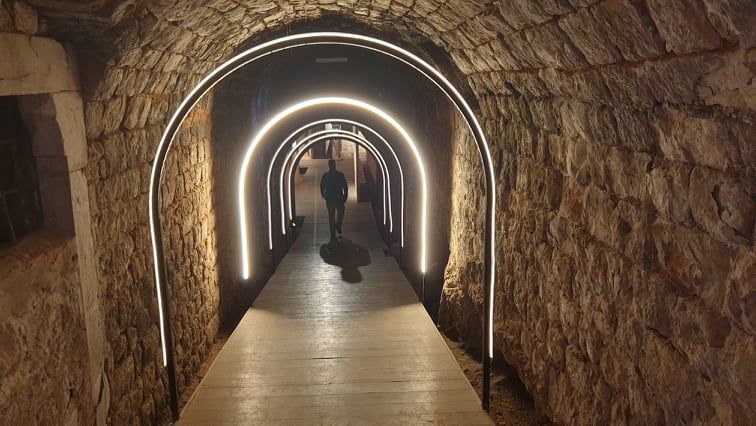
And a modern-day interpretation of the Curse of Lokrum. In 1798, after the island was sold, the Benedictines were forced out. As they left, they held torches and put a curse on the island, a curse that will only be lifted when that candle wax is collected and made into candles once more.

The rabbits might be famous on Lokrum, but it’s also the island of incredibly beautiful peacocks.
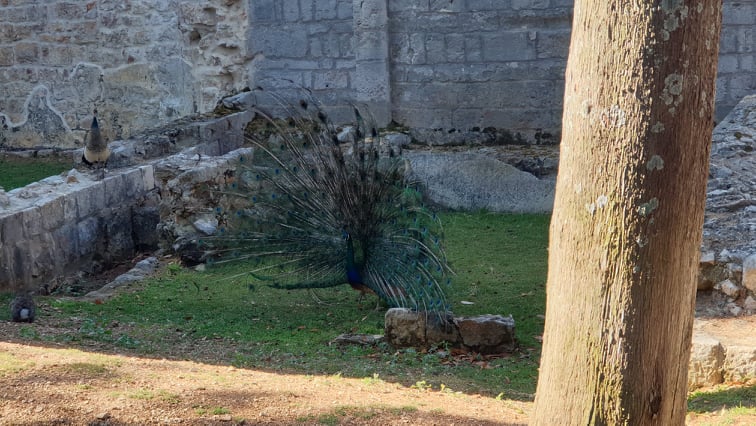
I was impressed at how well sign-posted everything was for hikers, of which there were several. Our heroic firefighting chauffeur navigated the narrow roads perfectly until we reached the top of the island and the forbidding fortress at the top.
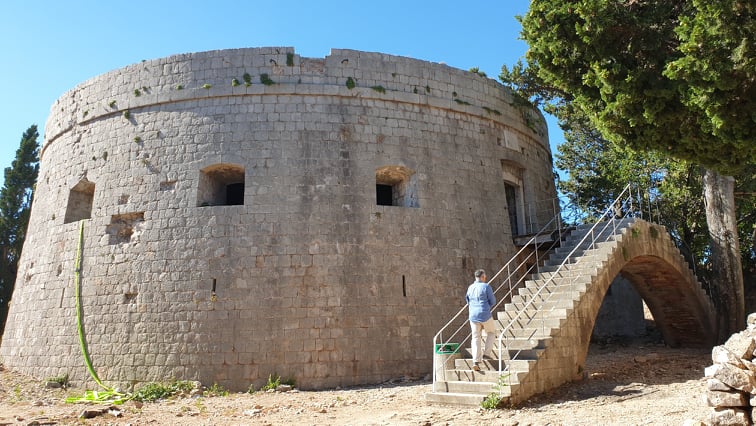
The Lokrum fire fighters do an awesome job. Apart from providing outstanding views like the one above, standing on top of their huge water tank close to the top of the island, water hydrants are everywhere. There are five firemen by day, with two sleeping overnight. Their organisation is typical of what I found on Lokrum – a fantastic island of natural beauty shaped by a little human order and planning.
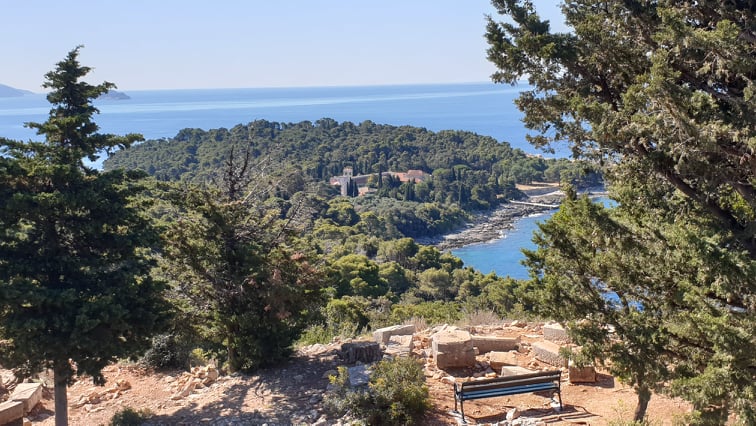
The view down to the monastery from the fortress at the top. It was much too hot for hiking, but I can imagine this to be a very rewarding hike in cooler temperatures.

A water tank with quite the view…
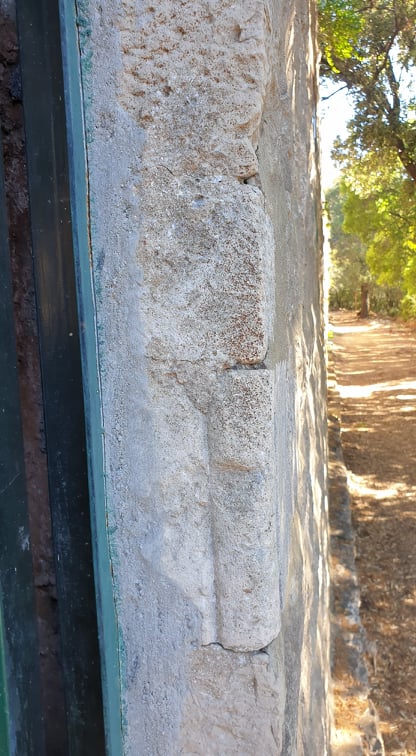
The tour continued with a firefighter buggy transfer to the Lokrum Lazerat, the original quarantine place on the island. Look how straight they built the stone walls in the 16th century.
Dubrovnik became the first state in the world to officially sanction quarantine facilities in 1377 after the first case of the Black Plague arrived on the island of Sipan. The first facilities were set up in Cavtat, followed soon by two islands not far from Lokrum. As with tourism in the current pandemic, Dubrovnik wanted to continue to trade while minimising risk.
My new guide Marija explained that the Dubrovnik Senate made the decision to extend the quarantine facilities to Lokrum in 1534, after which a vast complex went under construction, a square fortress 4 metres high with walls 100 metres long.
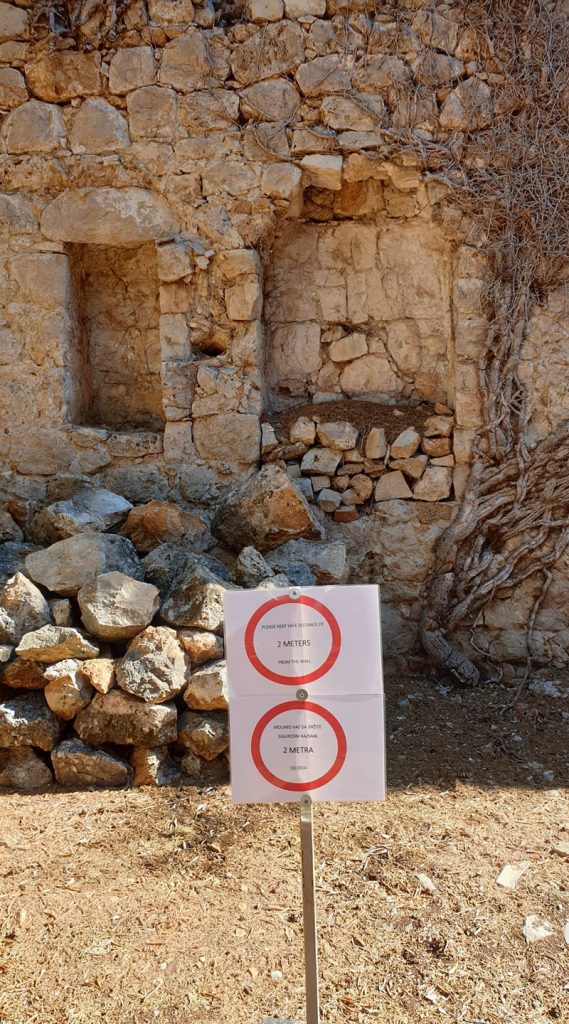
There were 150 rooms built into the walls, and you can see (from right to left) the fireplace, the air ventilation, and the toilet for one particular room. And somewhat ironically, a warning to keep your social distance in 2020 in case you might catch something.
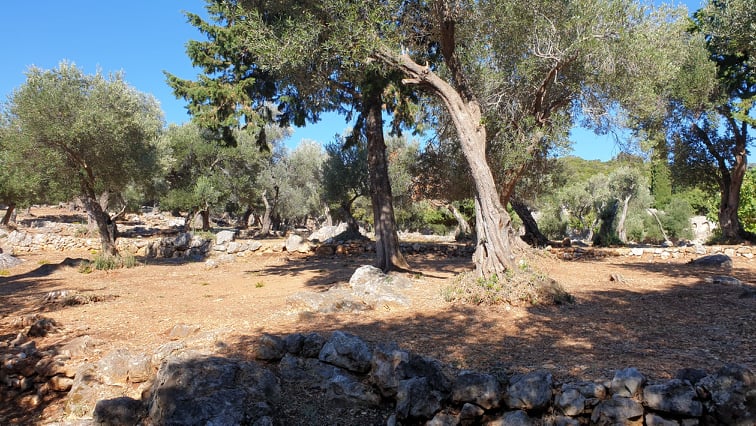
The complex was never finished after they realised that it could prove to be a launching pad on Dubrovnik if Lokrum ever got into enemy hands. Some of the stone was removed and used in the famous city walls. The most enchanting thing that remains of the Lokrum Lazerat is the 400-year-old olive grove which was started by the Beneditines.
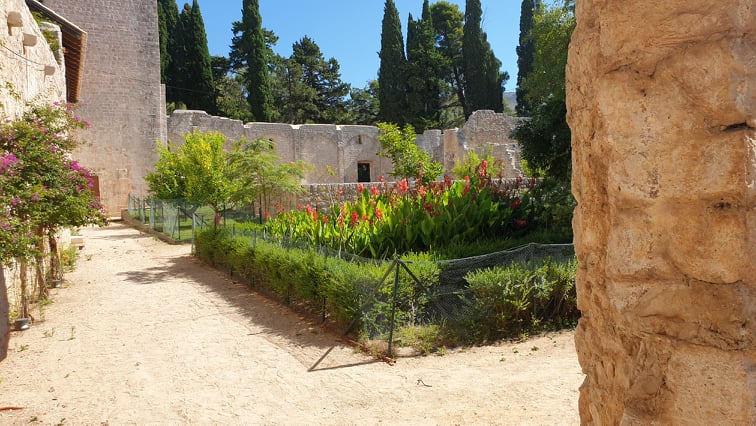
A truly delightful spot, and one of the nice things I learned is that Dubrovnik schoolchildren visit often to learn more about the history, flora and fauna, but also to conduct occasional classes in this natural paradise.
And, right on cue, the majestic Zrinski appeared to take us back to the real world. Lokrum, a magical place devoid of trash.

